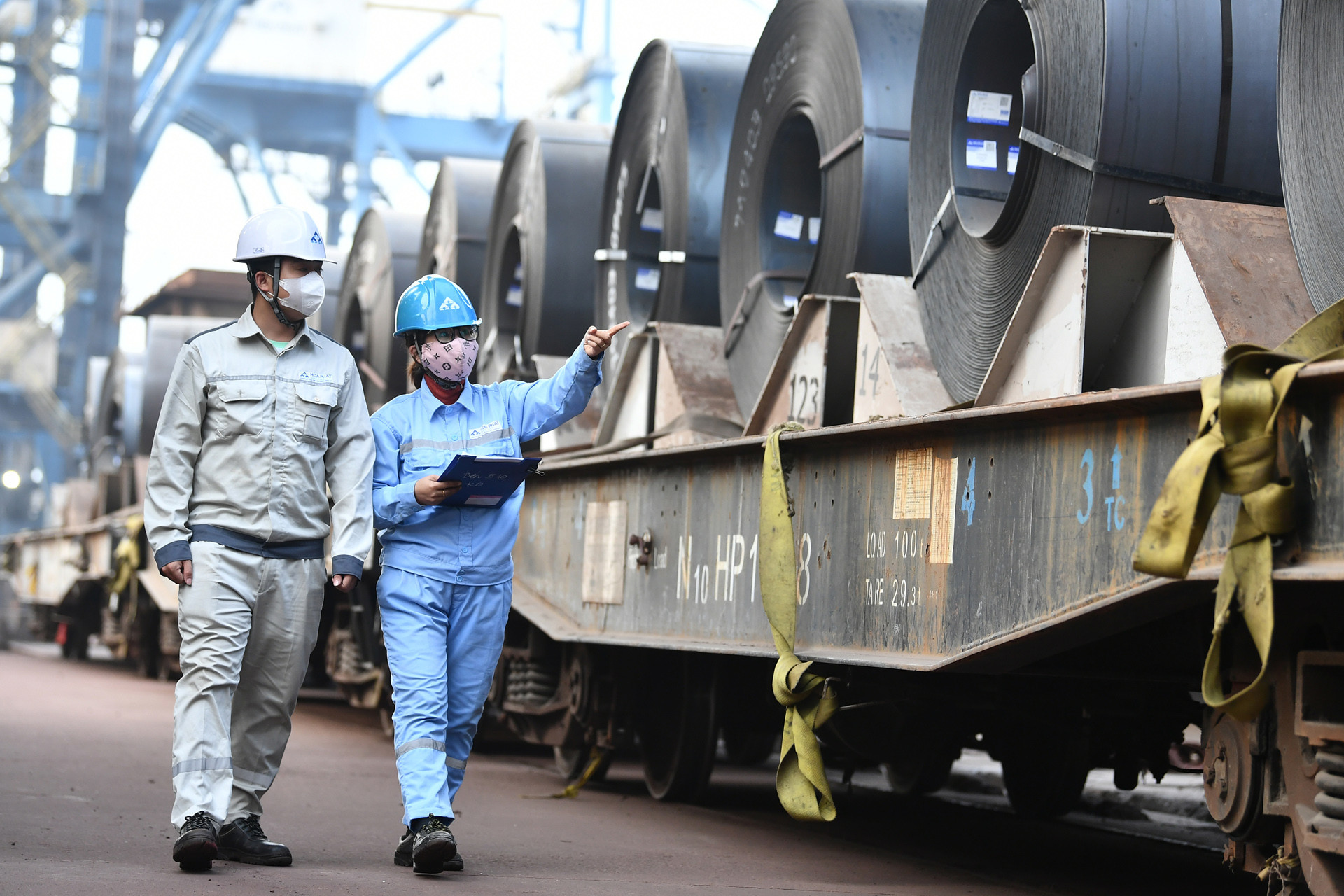
This is the first conference of the Government Standing Committee and large private corporations discussing solutions to overcome difficulties and promote the enterprises’ pioneering role by proactively implementing large projects and contributing to socio-economic development.
The event was organized after the frenzy Yagi typhoon landed in Vietnam and caused serious damage, estimated at VND40 trillion.
Typhoon Yagi has dealt a strong blow on the country’s economy and society. It attacked 26 cities/provinces in the north and Thanh Hoa, which make up 41 percent of the country’s GDP (gross domestic product) and covers 40 percent of its population.
The northern region is where industry, agriculture and tourism centers are located, acting as a driving force for the country’s development.
In such difficult circumstances, many private corporations have announced huge support packages. Vingroup, for example, has announced financial support of VND250 billion to emergency rescue activities, including the rebuilding of 2,000 collapsed houses.
Meanwhile, Ecopark has donated VND20 billion to help solve post-storm problems, and commercial banks, including SHB, VIB, MBBank, and SeAbank have announced the donation of VND2 billion each.
Joining hands with the state to solve natural disaster problems, private enterprises are implementing their social responsibility.
This meeting took place when Vietnamese people, businesses and the State must prepare to enter a new era, the "era of the Vietnamese nation's rise" as General Secretary and President To Lam has stated many times.
A report of the Ministry of Planning and Investment (MPI) showed that in 2023, the private economic sector made up 46 percent of GDP, generated 30 percent of the state budget revenue and attracted 85 percent of the labor force.
Many large private enterprises have arisen, accumulating enough power in capital, technology level and corporate governance, building strong brands in the regional market and the world, becoming the important driving force of the economy. They are Vingroup, FPT, Thaco, Hoa Phat and others.
However, though Vietnam has medium and large enterprises, and they still cannot lead the national economy as expected. The proportion of investment in leading and motivating industries, especially new ones such as clean energy, chip manufacturing and semiconductors remains modest.
Vietnam still lacks projects large enough to make a breakthrough and bring spillover effects to help other enterprises restructure and improve national economic competitiveness.
The Vietnamese business community remains young compared with other regional countries and the world. They still cannot accumulate large capital, knowledge, technology and business experience. Most Vietnamese enterprises are small and medium scale, and don’t have original technology. They are not sufficiently capable of digitizing and greening their business activities.
By the end of 2023, the total assets of some large private corporations had reached $70 billion. As such, the total assets of the largest Vietnamese economic groups are just equal to the assets of Indian Infosys alone.
The World Bank estimated that 80 percent of global profits is created by 10 percent of the largest enterprises. The enterprises contribute one-third of total export turnover and half of nations’ export growth rate.
With a 100 million consumer market, Vietnamese private enterprises have space to grow, and the country is eager to have powerful economic groups capable of competing equally in the international market, not just in Vietnam.
The state is considering developing huge projects, including the North-South Expressway, urban railways, Vientiane - Hanoi highway and Vientiane – Vung Ang highway. It is also considering developing renewable energy and offshore wind power projects.
These all give great opportunities to private enterprises, according to Nguyen Dinh Cung, a respected economist.
The high-speed railway on the North-South route project, plus other urban railway projects, for example, will create a construction market worth $75.6 billion ($33.5 billion and $42.1 billion, respectively), a market of instruments and equipment worth $34.1 billion (locomotives and wagons worth $9.8 billion; signaling systems and other equipment about $24.3 billion); and millions of jobs.
Many governments around the world create favorable conditions for their enterprises to undertake huge projects, and the same should be done by the Vietnamese government.
If Hoa Phat Group can obtain the right to develop railways, it will invest in technology and R&D. And when Hoa Phat and other businesses can participate in projects, their capability and the capability of the entire industry will improve.
Tu Giang - Lan Anh